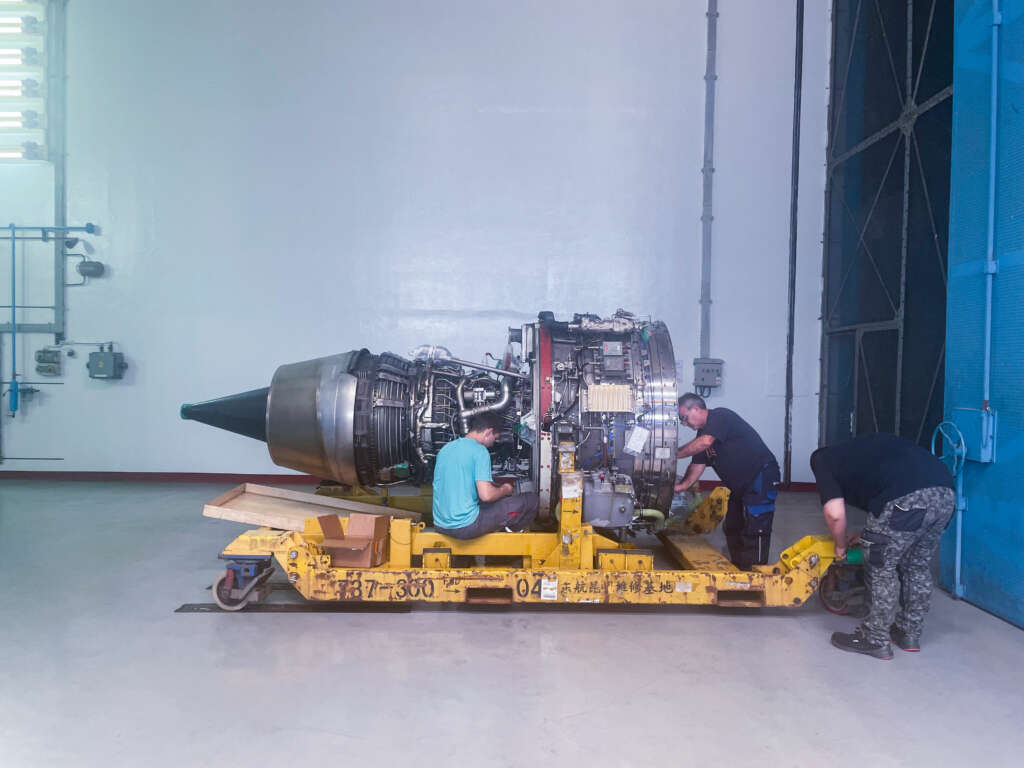JAT Tehnika’s Engine Test Cell Unit has set the standards of excellence in the aero engine testing industry. We prepare and test engines in our advanced engine test facility – one of the first such facilities in Europe, and the largest test facility of its kind in the Balkans. It is built to prepare and test engines with thrust rate of up to 75.000 lbs, working with important engine manufacturers i.e. CFM to support third party requirements within the region and globally. This facility is certified by DCA, EASA and FAA to test various types of Jet Engines. Pavle Petrović, test cell manager at JAT Tehnika, part of Avia Prime Group, tells us more about how it all started, the current situation, and plans for the future.
When was the engine test cell unit built in JAT Tehnika?
The Engine Test Cell project was materialized during the late ’80s of the 20th century. Conditionally said, the construction of the Engine Test cell facilities was complete before 1989, but the project was rendered finished in late November 1989, as that was the completion date of “Correlation Report of Yugoslav Airlines Test Cell for CFM56-3 Engines”, when CFM provided JAT Tehnika the baseline data to be used for validation of measured engine test parameters. With all the necessary steps taken to ramp up the engine test cell, from 1989 JAT Tehnika became one of the first European MRO’s to be able to autonomously test commercial jet engines.
What does engine testing look in the test cell unit? What is the purpose of the testing?
Generally speaking, engine testing is a thoroughly defined process. Roughly analyzed, the process is started with functional engine tests and later completed with performance acceptance testing. This being said, no engine test is the same, as different challenges occur during the actually testing phase of an engine shop visit. This is where a team of experts is necessary to detected and resolve potential issues. However, the goal remains unchanged during the whole process of engine testing – to provide a safe and quality product to the end user – customer.
At what point does the engine undergo inspection?
Based on the applicable regulation and manufacturer requirements, the engine may be subject to an incoming test before engine maintenance is performed, and acceptance/certification testing that is performed after the engine shop visit is complete.
What types of inspections are performed?
In relation to the already mentioned functional and acceptance tests, the engine testing process requires the maintenance crew to perform rigging and adjustment of the engine control components, vibration analysis and fan trim balancing.

What are the test cell unit capacities? How many engines are inspected annually?
The original project envisioned a large testing capacity for the JAT Tehnika Engine Test Cell facility in order to support the rapidly growing fleet of the Yugoslav Airlines. The department contains a separate area for:
1. Engine test preparation / post-test inspection and shipping preparation
2. Engine testing
3. Control room
Having this in mind, the facility capacity allows a possibility to test multiple engines a day; where one engine can be prepared for a test, while another is being tested in the testing area; lastly, the third one can prepared for borescope inspection, conservation and shipping. This is where the constructors certainly kept in mind the efficiency of workforce, so it is quite interesting how LEAN was implemented in JAT Tehnika from its beginning. Currently, the Engine Test Cell facility supports approximately 15 engine test yearly, however this number is envisioned to grow rapidly due to entry of CFM56-7B and -5 market segments.
What types of engines are serviced in the engine workshop? What engine types are subject to bench testing?
JAT Tehnika currently holds capability for CFM56-3B1, CFM56-3B2 and CFM56-3C1 maintenance and testing.
What is the difference between an engine run up and a test cell engine inspection?
The checks performed during an engine run-up vary with the type of aircraft and with the operating rules under which the flight is being conducted, e.g., instrument flight rules, visual flight rules, operation as a commercial carrier or private pilot, and so on.
That being said, there are numerous differences in the two types of testing; the main being that the engine run-up is done while the engine is on wing as a form of a last-minute check prior to aircraft take-off.
What do all employees face during engine inspection in the test cell unit?
Engine testing as a process requires an expert team of engine mechanics, quality control inspectors, engine performance engineers and test cell maintenance technicians to synchronize their knowledge and expertise towards the same goal – overcoming the potential challenges in order to provide a safe and quality product to the customer.
This is no easy task and requires years of personnel training, extensive experience, data driven decision-making and lastly a “troubleshooting team mindset” capable of making the correct and justified action at the adequate moment.

What are the future plans for the engine workshop and test cell unit?
The Engine Maintenance Department and Engine Test Cell Department are closely connected with their current work, but also future goals. Currently, JAT Tehnika is developing capability for the CFM56-7B engine type and has plans to include the CFM56-5 type as well. This development will certainly underline JAT Tehnika, now part of AviaPrime, as one of the world-class and leading engine maintenance organizations.
For us, as our company moto states: “The only way is up!”

